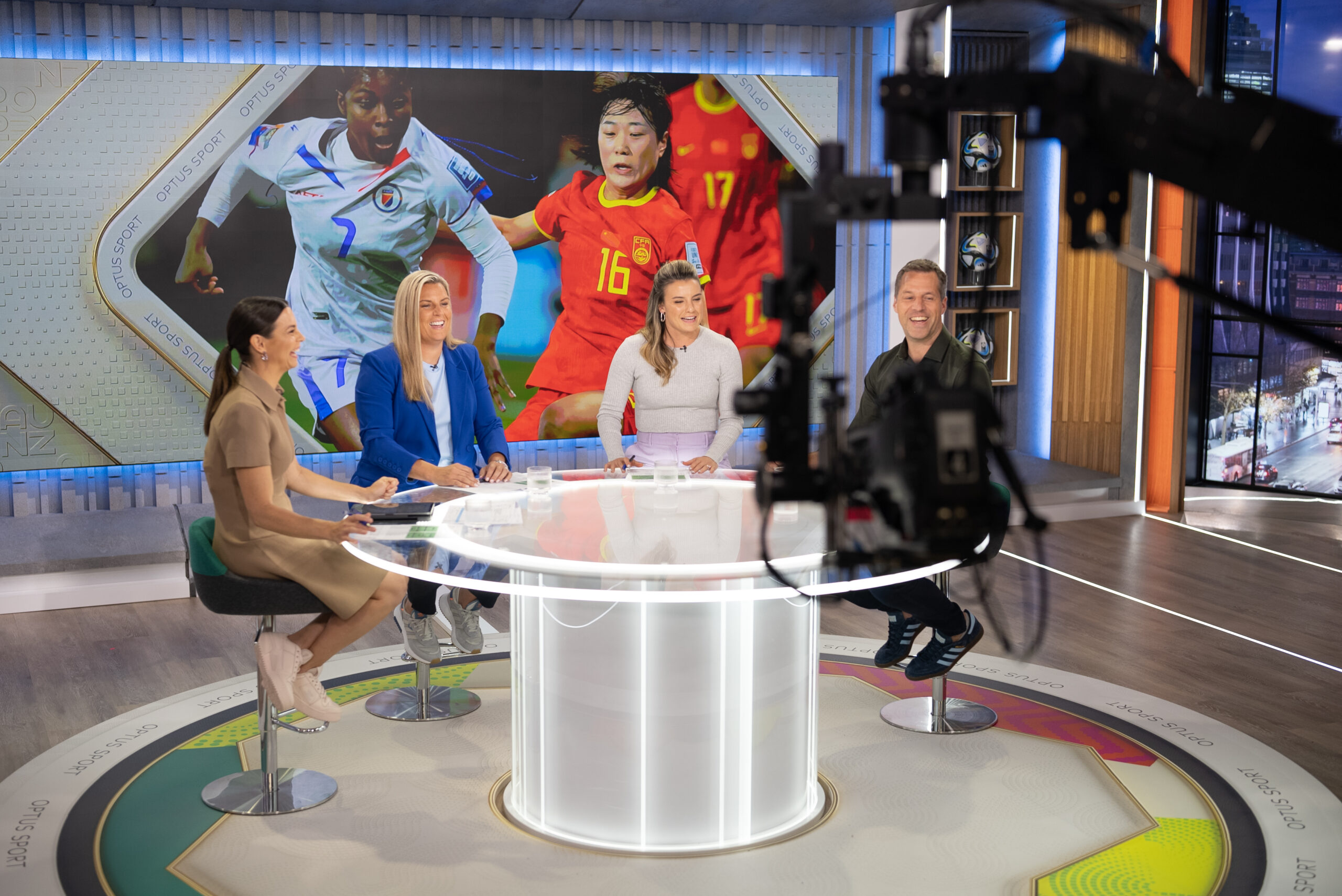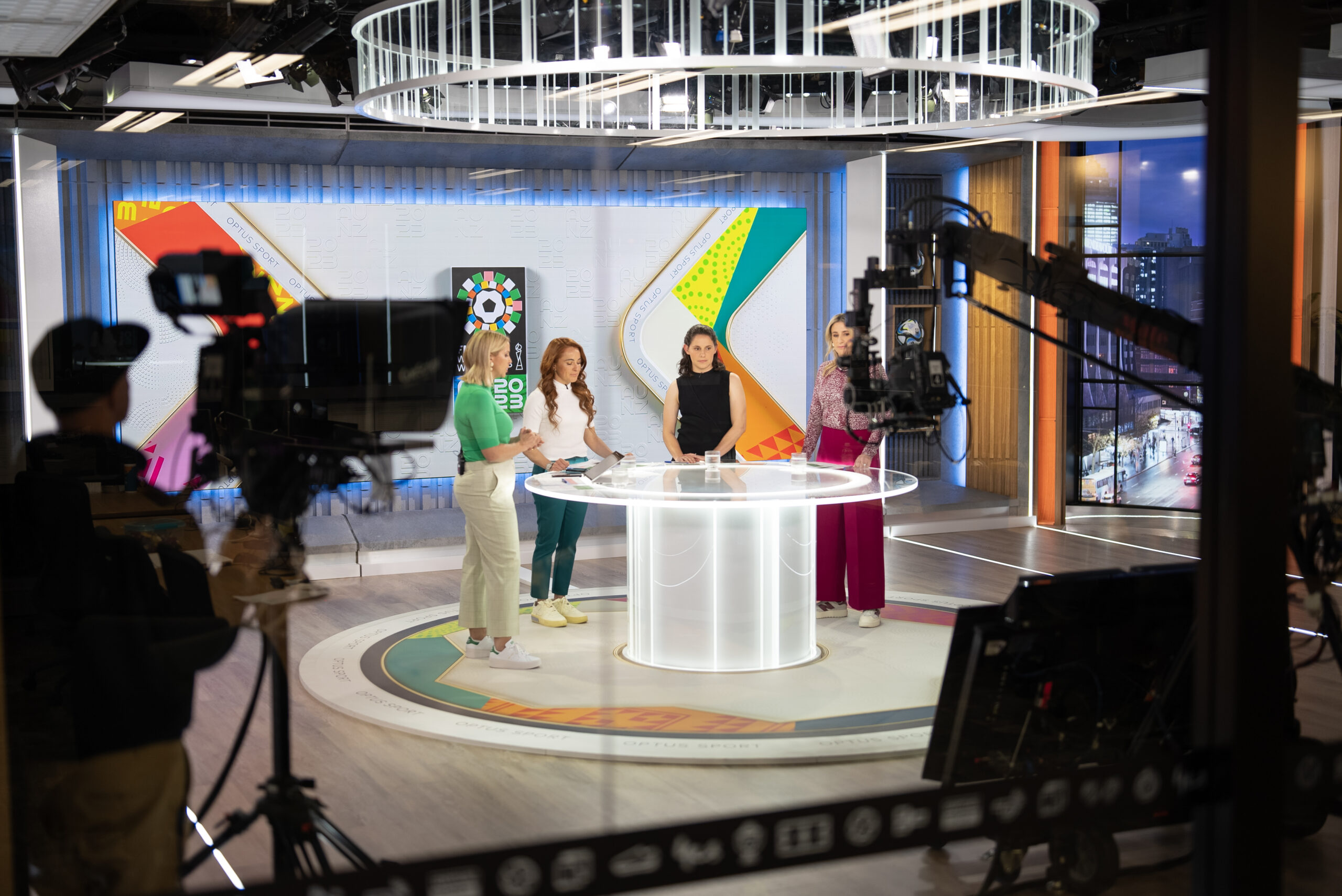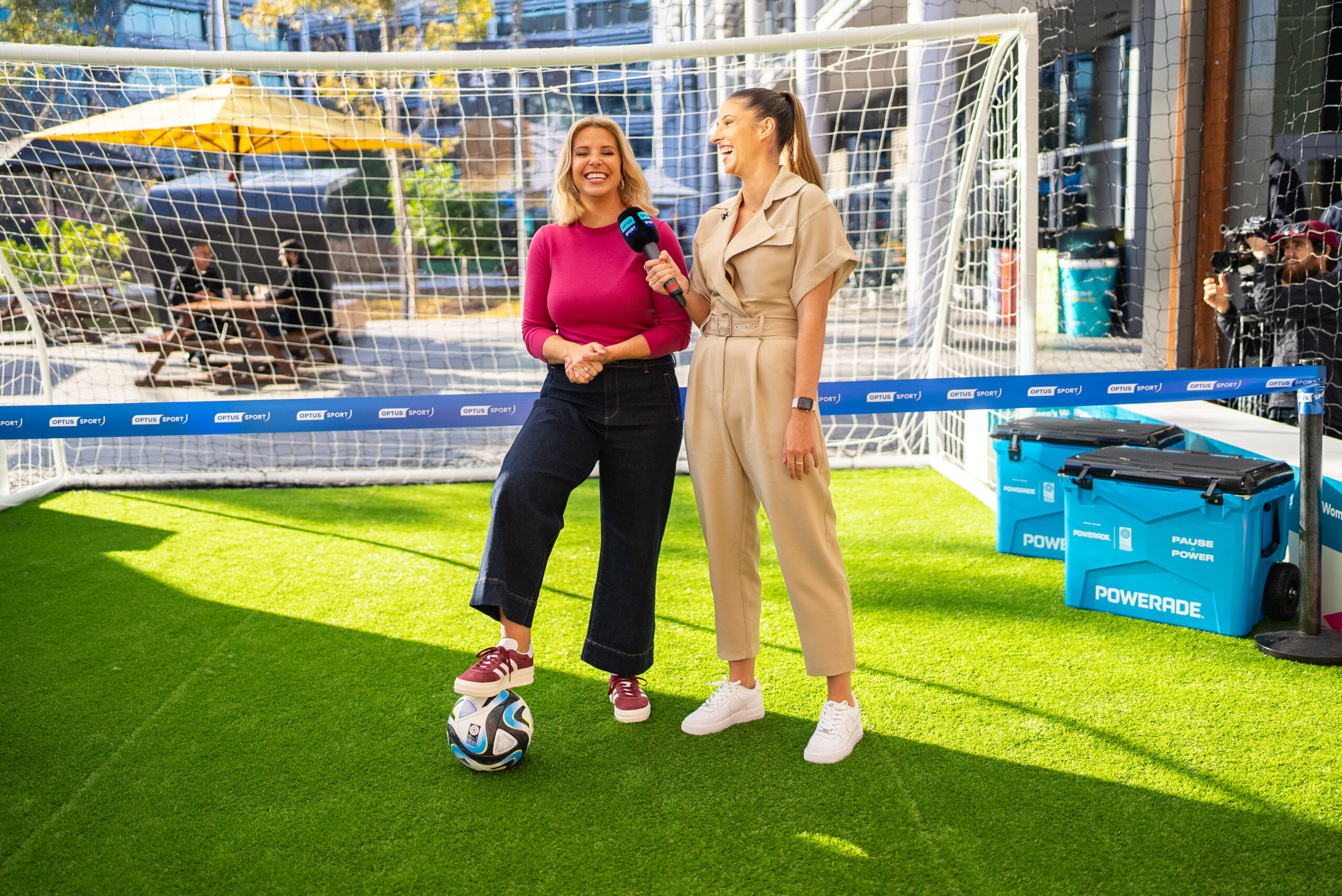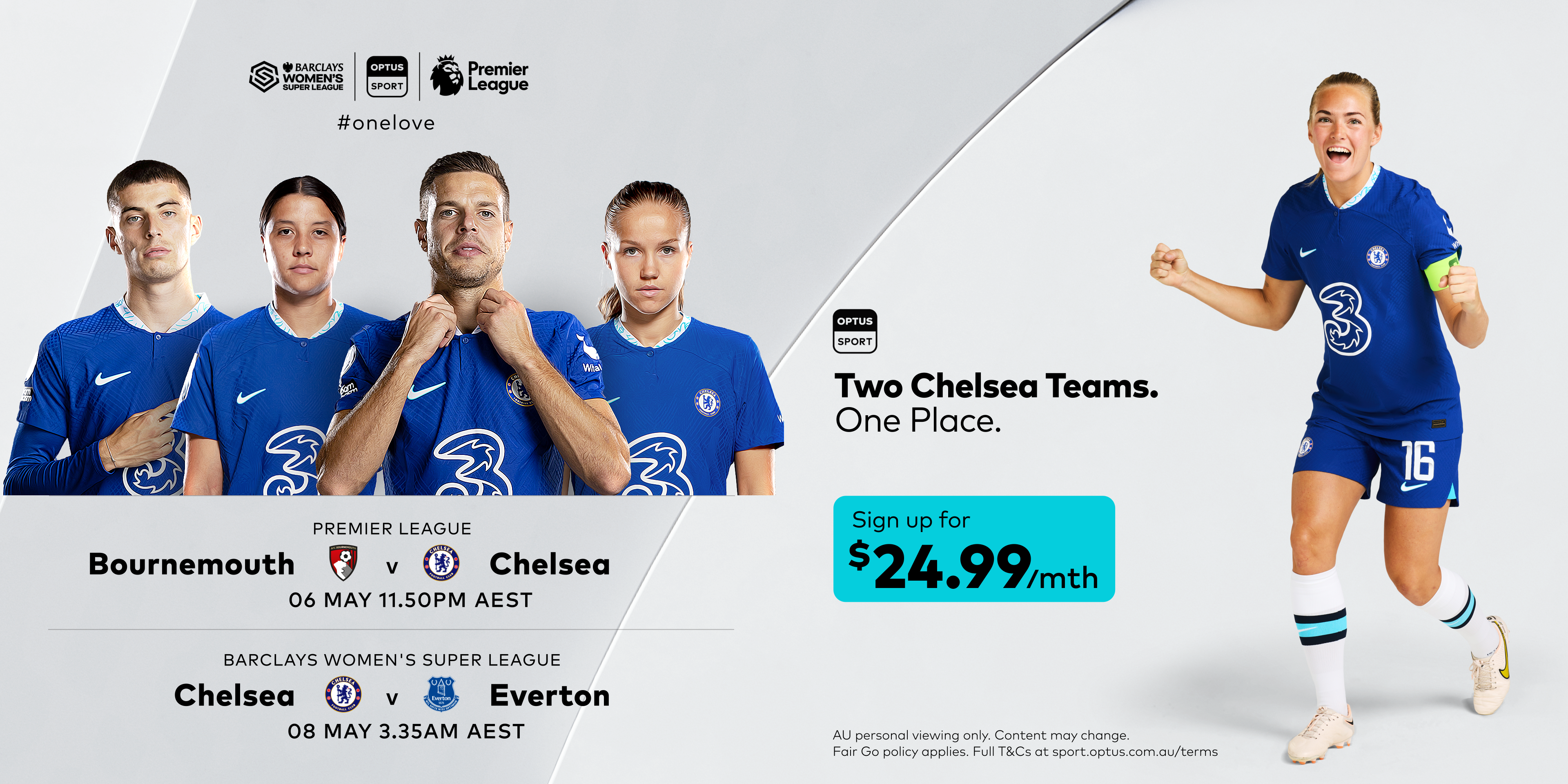Live From FIFA Women’s World Cup: Optus Mobilizes in Big Way To Serve Australian Fans
The Australian OTT service is deploying 100 people in the field, 100 at headquarters
Story Highlights
Optus Sport, the Australian OTT football-centric service, is the only place for Australian football fans to capture every FIFA Women’s World Cup match (Channel 7 is broadcasting 15 matches) and the service, launched in 2016 when it acquired the rights to the English Premier League, is putting a lot of production resources and effort into making sure subscribers not only don’t miss a second of match coverage but also get plenty of wraparound coverage.
Josh Hanson, associate director, projects, creative, and content technology, Optus Sport, recalls that, when Optus landed the rights to EPL in 2015, there was no infrastructure at all to launch the service the following season: the team literally had to go out and buy laptops to create content with. It was a complete startup. That’s not the case this month: about 200 people will be working for Optus on the Women’s World Cup.
“We have around 100 people across field operations, the studio crews, and our stadium operations as well as our social and digital teams who are amplifying the tournament across our channels,” he says. “And then we have over 100 Optus staff from different teams working on the tournament here at our headquarters.”
Optus coverage begins at 8 a.m. with Daily Kick Off, covering all the football news from around the world and a preview of what lies ahead.

The Optus studio for Daily Kick Off has been extra busy during the Women’s World Cup. At the desk: (from left) Niav Owens, Tanya Oxtoby, Chloe Logarzo, Thomas Sorensen
“We have more World Cup content than we can handle,” says Hanson, “but we’re also combining our other football rights into the show, plus reporting on the latest news from around the globe. That show runs for an hour each morning, and, generally, we will go to air about half an hour before the first match each day. For some matches, we have started with an hour pre-match, and we try to roll the coverage post-match as long as we can.”
All matches, apart from the Australia National Team matches and the Final, are hosted from the Optus facility in Macquarie Park, about 20 minutes north of Sydney and 15 minutes from the IBC, where Optus has a small presence. In addition, five talent and production teams — each comprising talent, a camera operator, and a producer — are traveling around Australia and New Zealand and being onsite for matches.
“We also have a presentation platform in the stadiums, where we will have four presenters, and we have sideline positions using LiveU,” says Hanson. “We also have a community team going to the fan festivals, community gatherings, pubs, and clubs and just being amongst the fans and capturing that energy. The field operations are extensive.”
Helping improve those field operations has been Ethernet lines, which HBS is providing both at the presentation platform and pitchside.
“We like to go live on multiple platforms,” notes Hanson. “If we’ve got a reporter who goes live into the broadcast, we might pop up five minutes after that and stream them onto TikTok or YouTube or Twitter. It works well for us. We were excited when FIFA and HBS told us we would have the ability to have the Ethernet drops at the stadiums, because it allows us to tell more stories and that’s what we want to do. We’re looking forward to the Euros 24, where, hopefully, those facilities are also available.”
The Optus Sport social team is in full swing, tapping into the FIFA Max server as well as the FIFA social-media interface. The FIFA Max offers the team access to footage of team arrivals, departures, training, and other events that can be hard to cover.
“We can send our crews to training and focus on having our talent do their part and tell the story on camera, and we have the actual B-roll come in via FIFA Max,” Hanson explains. “That has been really helpful for us.”
FIFA Max has also allowed for a lot of content to be delivered via social-media channels.
“Lots of content comes in from FIFA and HBS that we can leverage,” says Hanson. “We basically have a model where we pull in as much content as we can and publish it out into our platform and let the customers decide what they want to watch. But the more we publish, the more they watch.”
Content is being created 18 hours a day every day, including rest days. That’s a change from past tournaments, when the team would take a break. But, with social demands and the tournament being on home soil, there is a ton of demand for content whether it is a rest day or not.
Ways Hanson, “We’ve decided we’re gonna push through and make sure the social channels and the morning programming capitalize on the energy and excitement of the tournament.”
At the center of the content creation is a team of 25 Adobe Premier editors creating content for social media, the studio programs, and more. If a goal is scored, the team can spring into action and publish it out to the social channel that they are responsible for.
“If a goal happens,” Hanson notes, “it’s frantic in here because someone will grab it and publish it to TikTok and then someone else will publish it to Twitter. And someone in craft editing will edit it for the studio coverage. But everybody is focused on the same thing at the same time, and they cross-communicate. The coolest thing is, the social guys can clip up something and pump it into the studio and the guys who are working on studio support can clip up something and publish it into the project for the social team. It’s a small operation, but it’s very efficient.”
Another key deliverable is the condensed formats for games and highlights packages, which come in three-, nine-, and 24-minute versions. A 45-minute version wraps some pre-/post-match coverage around the 24-minute version.
“We introduced the 45-minute version for UEFA a few years ago, and it just took off,” says Hanson. “We’ll have two concurrent editors making those four formats, with one editor taking a short format and a long format each, and then both work on separate timelines. When something happens, the source moment gets dragged into both timelines, and they adjust it. For this tournament, we’re also using WSC Sport for Google Web stories and as a supporting content-creation tool for quick compiles.”
To keep track of things, the Optus Sport production team relies on Ross Inception in the cloud as its rundown tool.
“We’ve been using it for four years now,” Hanson explains. “It has been a great tool for us because it has enabled the team to basically work from wherever they are located. If we want to spin up a prompter somewhere in the world, it’s an endpoint of the cloud. If we want to spin up an extra graphics engine here that is connected to MOS [the Media Object Server], it’s an endpoint of the cloud. Inception has been phenomenal for us as it allows our producers to sit at home and prep their rundowns on their couch. Our talent who are presenting from the stadium can open up the rundown on their iPads and change the script. We don’t have to have conversations about what the questions are: the talent can just jump in and see the questions and edit the questions if they want to, what their overlay items are, etc.”
AWS Elemental is used for file ingest, grabbing transport streams as they come in and writing it to the server, and the Adobe editors can access it in near real time. “It allows us to keep everything in the IP environment and not have to decode the feeds,” says Hanson. “It’s really efficient.”
Many on the production team have also spent time in newsrooms where the MOS protocol allows newsroom computer systems to communicate with other devices.
“We use Ross Inception to drive all the graphics templates back into Xpression graphics via MOS,” adds Hanson. “We’ve got numerous Ross channels that power the set graphics and all the keyed graphics, and there are some redundant engines in case anything breaks. Using this workflow in live sport production has helped our producing team be more efficient.”
Hanson’s favorite room in the Optus facility is the vMix control room, born out of the COVID pandemic when football experts were at home in lockdown. “We can experiment without needing to bring in the full resources of a studio crew,” he says, noting that it helped Optus get through the pandemic.
The vMix was originally located on top of a photocopier but now has a room with two workstations. Gravity Media integrated the control room into the house router, comms, and Ross Xpression, and vMix also taps into the campus-wide NDI and Dante networks.
“It allows us to basically pull up any source on the floor, any piece of equipment, and bring it into a production in vMix,” he says. “The vMix operators produce programming in a very cost-effective and light-touch way. We do a lot of social streaming here, with one machine operating in 16:9 and the other in vertical video.”
Production of Daily Kick Off
The centerpiece of Optus Sport football coverage throughout the tournament is Daily Kick Off, which is produced from the Optus Sport offices. It features a casual couch set, LED displays, and a Piero touchscreen monitor, which was brought in for the Women’s World Cup.

Gravity Media has been providing cameras and all other production gear for Optus since the service launched in 2015. At the desk: (from left) Amy Duggan, Cote Rojas, Ash Sykes, Heather Garriock
“We haven’t introduced Piero on-air yet,” Hanson notes, “because the conversations between the talent have been excellent. The presentation team have been giving amazing analysis and insights. We haven’t put the touchscreen in place yet, but we wheel it in for the Finals.”
Prerecorded augmented-reality graphics have also been incorporated into the show, and Hanson says viewers had a positive reaction.
“We love to evolve our coverage during a long tournament,” he adds. “We had prepared AR statistic-based graphics ahead of each match in postproduction, and that has worked well for us and adds AR into our pre-match without needing the full workflow.”
One thing that is unique is that the studio in the heart of the office has a wraparound floor-to-ceiling window. The entire team working on Optus Sport can see the studio and see what’s happening throughout the day.
“It provides a real sense of connection and focus,” says Hanson. “It’s very different for the talent who are used to sitting in an enclosed studio. They can sit at the hosting desk and see the data-analytics team getting excited about something. It provides this interesting sense of connection to the broader operation, which has been great.”
Gravity Media, Optus’s technical-facilities and -services provider, supplies the equipment for all live productions as part of a 2019 agreement. “We provided the technical infrastructure, vision mixers, and cameras,” notes Gravity Media, Director, Engineering, Ian Stokes.
The Gravity relationship provides managed services around the globe, says Hanson. “If we need to host something in the UK, we can pick up a Gravity studio. That has helped us scale our coverage model. It allows our team to concentrate on the storytelling, the producing, and the editing and graphics. Gravity concentrates on the studio operators and the heavy, technical side of things. That’s working really well for us.”

An outdoor mini pitch gives Optus announcers Amy Duggan (left) and Amy Harrison a second location for the Daily Kick Off show.
Daily Kick Off also has an outdoor mini pitch built on a patio inside the Optus campus, providing a different look to show segments and allowing presenters and guests try football skills and challenges. A LiveU 800 over Optus 5G passes four camera signals and audio into the control room upstairs.
“It’s a great workflow,” says Hanson. “The team can switch seamlessly between the pitch and the studio sources. It’s amazing to be able to bring back four cameras for the segments on the pitch. It allows us to be creative with angles, and the directors love the options.
“We are using the same workflow,” he continues, “for match coverage of the FIFA Women’s World Cup at the presentation platforms at the stadiums [and] are also bringing back four cameras via the LiveU 800’s. We are backing that up at the IBC on an SDI tie line, as we need to have appropriate levels of redundancy on such a large production. We’ve got a single SDI tie line taking the wide shot back via the primary encoding paths.”
‘One Love’ Marketing Plan
The growth of the women’s game in Australia is not being lost on anyone, and that is one reason that, over recent seasons, Optus has deployed a marketing strategy linking women’s football with men’s football. Called “One Love,” it is designed to raise awareness that a football fan of a club like Chelsea or Manchester City has not only a men’s team to root for but a sister club as well.

The One Love campaign from Optus ties men’s and women’s football together on social-media platforms and beyond.
“The whole strategy was designed to put women’s and men’s football on the same level,” says Hanson, “and basically just call it football and not talk about gender at all. We want to challenge the mindset of our mostly male audience, and we’ve seen a year-on-year uplift on our Women’s Super League rights.”
And this weekend, with the FIFA Women’s World Cup nearing its conclusion and both EPL and La Liga kicking off their seasons, the Optus Sport team is in full swing.
“Supporting EPL and La Liga are huge operations in their own right for us,” says Hanson. “So everyone needs to have some very restful rest days this week. Heading into the weekend, it’s going to be busy.”
